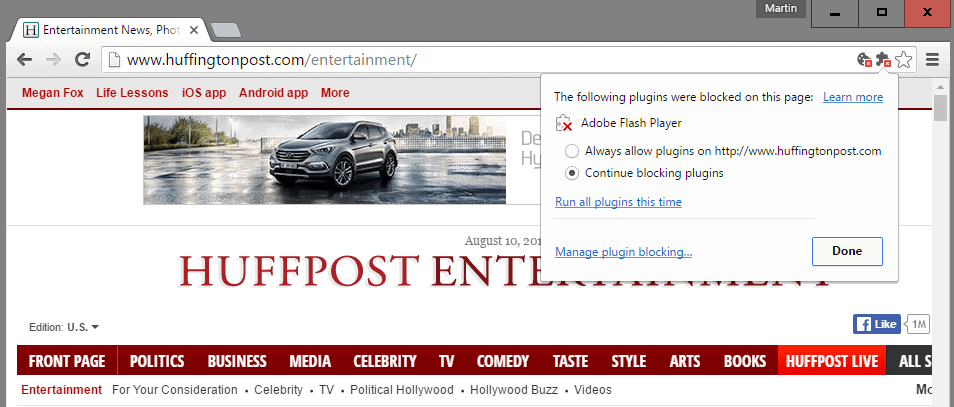Flash is a dying technology in its plugin-form, and Google plans to push Flash a bit further to the graveyard by making two Flash-related changes in future versions of Chrome.
The first change will block behind the scenes Flash content, which is usually used for page analytics and tracking.
When Google made detect and run important plugin content the default plugin loading behavior Chrome back in 2015, it exempted elements smaller than 5×5 pixels, and elements larger than 400px in width or 300px in height from that.
Back then you had to switch to “let me choose when to run plugin content” to block Flash entirely on the chrome://settings/content page.
Basically, what it meant was that some Flash elements were still loaded like before. The change announced today on the official Chrome blog removes that exemption.
Chrome Flash blocking

Chrome will start to block these elements once the change goes live. This applies only to cross-origin plugin content, content that is loaded from third-party sites, and not the site the browser is connected to.
We would now like to remove this exception and instead not load tiny, cross-origin content. If the user has their plugin setting set to the default of “Detect and run important plugin content”, the browser will not instantiate cross-origin plugin content that is roughly 5×5 or smaller or has an undefined size.
Chrome displays an icon in its address bar to indicate that plugin content was found but is not running. You may interact with the icon to reload the page with plugin content enabled, or use it to add an exception to Chrome’s plugin whitelist to have plugin content loaded automatically when the site is visited in the future.
The change will go live in Chrome 53 according to Google.
The second change will favor HTML5 over Flash by making it the default experience in Chrome. When Chrome notices that a site supports HTML5 and Flash, it will request the HTML5 content automatically.
When a site supports only Flash for its content, Chrome will display a prompt to the user that allows for Flash content to be loaded on the site.
This change will be integrated in Chrome 55 which will be out in December 2016 according to Google.
Google is not the only company that pushes Flash out. Mozilla announced recently for instance that it will block Flash content used for fingerprinting in Firefox.
Google’s move marks another step in the slow process of removing Flash in the web browser. The main reason for this is that while Flash is in a downwards trend, it is still used on many Internet sites.
Flash will continue to work in Google Chrome for the foreseeable future. The changes that Google plans to introduce later this year affect the default loading behavior only. Chrome users still have options to override most of it.
Tip: if you rely on Flash content, consider using a secondary browser for that.